Description
Best Seller!
Basil – Italian Large Leaf – Italian Large Leaf Basil (A.K.A. Sweet Basil)
50 Seeds per pack
Annual Herb
Days to Maturity: 60–90 Days
Sun Requirements: Full Sun to Partial Shade
Botanical Name: (Ocimum basilicum)
Introduced to Europe and America from Italy in the late 1700s, Italian Large Leaf Basil is a classic Genovese-type heirloom treasured for its culinary and medicinal value. Known for its robust, slightly citrusy flavor and reliable yields, it has become a staple for home gardeners and chefs alike.
Plants grow to 24–36 inches tall and spread 15–24 inches wide, with large, glossy, medium-dark green leaves spanning 3 to 4 inches long. White blooms appear mid to late summer and attract pollinators such as bees and butterflies. Pinching back flowers will encourage a bushier, more foliage-heavy plant. Italian Large Leaf Basil also grows well in containers, making it ideal for patios, windowsills, or balcony planters.
Its flavor is milder and sweeter than traditional Genovese types, with less clove-like bite, making it an excellent choice for those who prefer a gentler pesto or a more balanced touch in tomato-based sauces, soups, and fresh salads.
Traditionally, Italian Large Leaf Basil has been valued for more than just flavor—it’s been used to soothe colds, headaches, nausea, and minor skin irritations, and is known for its calming properties.
Rich in vitamins A, C, and K, it offers both flavor in the kitchen and a healthy boost to the table.
Disease Resistance: Downy Mildew, Fusarium Wilt.
Planting Instructions for Basil – Italian Large Leaf Seeds
When to Plant:
Start Italian Large Leaf Basil seeds indoors 3–4 weeks before your last expected frost date to get a jump on the season. In warm climates, you can also direct sow outdoors after all danger of frost has passed and nighttime temperatures stay consistently above 50°F (10°C). For a continuous harvest, sow new batches every 3–4 weeks through midsummer.
Where to Plant:
Italian Large Leaf Basil thrives in full sun and needs at least 6 hours of direct light daily. Choose a warm, sheltered location with well-drained, nutrient-rich soil. If growing in containers, use a high-quality potting mix and ensure your pot has drainage holes. Raised beds and greenhouses are also excellent options, especially in cooler regions.
How to Plant:
Sow Italian Large Leaf Basil seeds ⅛″ (3 mm) deep either in seed trays or directly into garden soil. For direct sowing, space seeds 6–8″ apart and later thin seedlings to 10–12″ once they’ve grown a few sets of leaves. Indoors, transplant seedlings once they reach 3–4″ tall and have at least two sets of true leaves. Before transplanting outdoors, harden off the seedlings by gradually acclimating them to outdoor conditions over the course of 7–10 days. Begin by placing them outside in a sheltered, shady spot for a few hours each day, slowly increasing their time outdoors and exposure to direct sunlight and wind. This process helps reduce transplant shock and ensures the plants adjust well to life outside, especially if moving from a warm indoor space to variable spring weather.
Growing Tips:
Water regularly but avoid soggy soil. Italian Large Leaf Basil appreciates steady moisture, especially in containers, but hates wet feet. Use mulch to conserve soil moisture and suppress weeds. Avoid overhead watering to prevent fungal issues. Pinch off the top set of leaves regularly to encourage bushier growth and delay flowering. Apply a diluted liquid fertilizer every few weeks or work in compost to keep plants vigorous. Afternoon shade can help prolong harvest in hot climates.
Harvesting:
Begin harvesting once the plants are 6–8″ tall. Pick leaves regularly, starting from the top down, to promote branching and ongoing leaf production. Cut just above a leaf node to encourage new shoots. Remove any flower buds promptly unless you’re saving seed, as flowering reduces leaf quality. Toward the end of the season, harvest entire stems before the first frost is expected. You can use fresh leaves immediately or preserve them for later use.
Storage:
Use Italian Large Leaf Basil fresh for the best flavor. Store short-term by placing stems in a glass of water at room temperature. Avoid refrigeration, as cold temperatures cause the leaves to blacken. For long-term use, preserve Italian Large Leaf Basil by freezing or drying. To freeze whole leaves, blanch them in boiling water for 3–4 seconds, transfer to an ice bath, dry thoroughly, then pack flat in plastic wrap and seal in a freezer bag for up to 3 months. You can also chop fresh Italian Large Leaf Basil and mix with olive oil, then spoon into ice cube trays, freeze solid, and store cubes in resealable bags—ideal for sauces, soups, or vinaigrettes. For drying, use a dehydrator at 95°F (35°C), an oven at its lowest temperature with the door propped open, or hang bundles in a dry, well-ventilated place. Once dried and crumbly, store leaves in airtight containers away from light. Use within 6 months for best flavor.
Companion Plants:
Italian Large Leaf Basil grows well with tomatoes, peppers, lettuce, chamomile, and oregano. Avoid planting near rue or sage, which may inhibit its growth.
Seed Saving:
To save seeds, allow a few basil plants to flower and go to seed. Once seed heads dry and turn brown on the plant, cut and store them in a paper bag. Allow them to dry fully in a cool, shaded area before threshing. Store cleaned seeds in a labeled envelope in a cool, dry place for next season. We also offer seed-saving envelopes for sale which include a designated space to write the variety name and harvest date, making them a convenient option for organized storage.
FAQ:
What is the historical or notable background of Italian Large Leaf Basil?
Italian Large Leaf Basil was introduced from Italy to Europe and America in the late 1700s. It’s an heirloom Genovese-type basil loved for both its culinary value and traditional medicinal uses.
How would you describe the flavor of Italian Large Leaf Basil?
Its flavor is robust yet milder than traditional Genovese types, with a sweet, slightly citrusy note and less of the clove-like bite, making it perfect for those who prefer a gentler basil taste.
What does Italian Large Leaf Basil look like, and how does it grow?
It grows 24–36 inches tall and 15–24 inches wide, with large glossy, medium-dark green leaves that are 3 to 4 inches long. White flowers bloom mid to late summer, attracting pollinators.
How much can I expect to harvest, and when is the best time to pick Italian Large Leaf Basil?
You can begin harvesting Italian Large Leaf Basil once the plant is well established, usually around 6–8 inches tall with several sets of leaves. Choose vibrant, healthy leaves and avoid any that are discolored or damaged. Regular harvesting encourages bushier growth and higher yield. For the best flavor, pick leaves before the plant starts to flower, though you can continue harvesting throughout the season as needed.
When is the best time to plant Italian Large Leaf Basil?
Start seeds indoors about 6 weeks before the last frost or direct sow after the danger of frost has passed. Basil prefers warm soil (65–85°F) and full sun to partial shade.
What are the common culinary uses for Italian Large Leaf Basil?
It’s a favorite for pesto, tomato-based sauces, fresh salads, soups, and herb butters due to its balanced, sweet flavor that complements many dishes.
What’s the best way to store Italian Large Leaf Basil after harvest?
To store fresh Italian Large Leaf Basil short-term, wrap the leaves in a damp paper towel and place them in a sealed bag or container in the refrigerator. For long-term use, finely chop the leaves, pack them into ice cube trays, top with olive oil, and freeze—perfect for adding to cooked dishes. You can also dry the leaves by air drying on a clean surface, using a dehydrator set to 95–115°F (35–46°C), or placing them in a low-temperature oven. Once fully crisp, crumble and store them in an airtight container.
What nutrients does Italian Large Leaf Basil provide?
This basil is rich in vitamins A, C, and K, offering not only flavor but also a nutritious boost to meals.
Does Italian Large Leaf Basil have any notable disease resistance?
Yes, it shows resistance to Downy Mildew and Fusarium Wilt, making it a more resilient choice for gardeners.

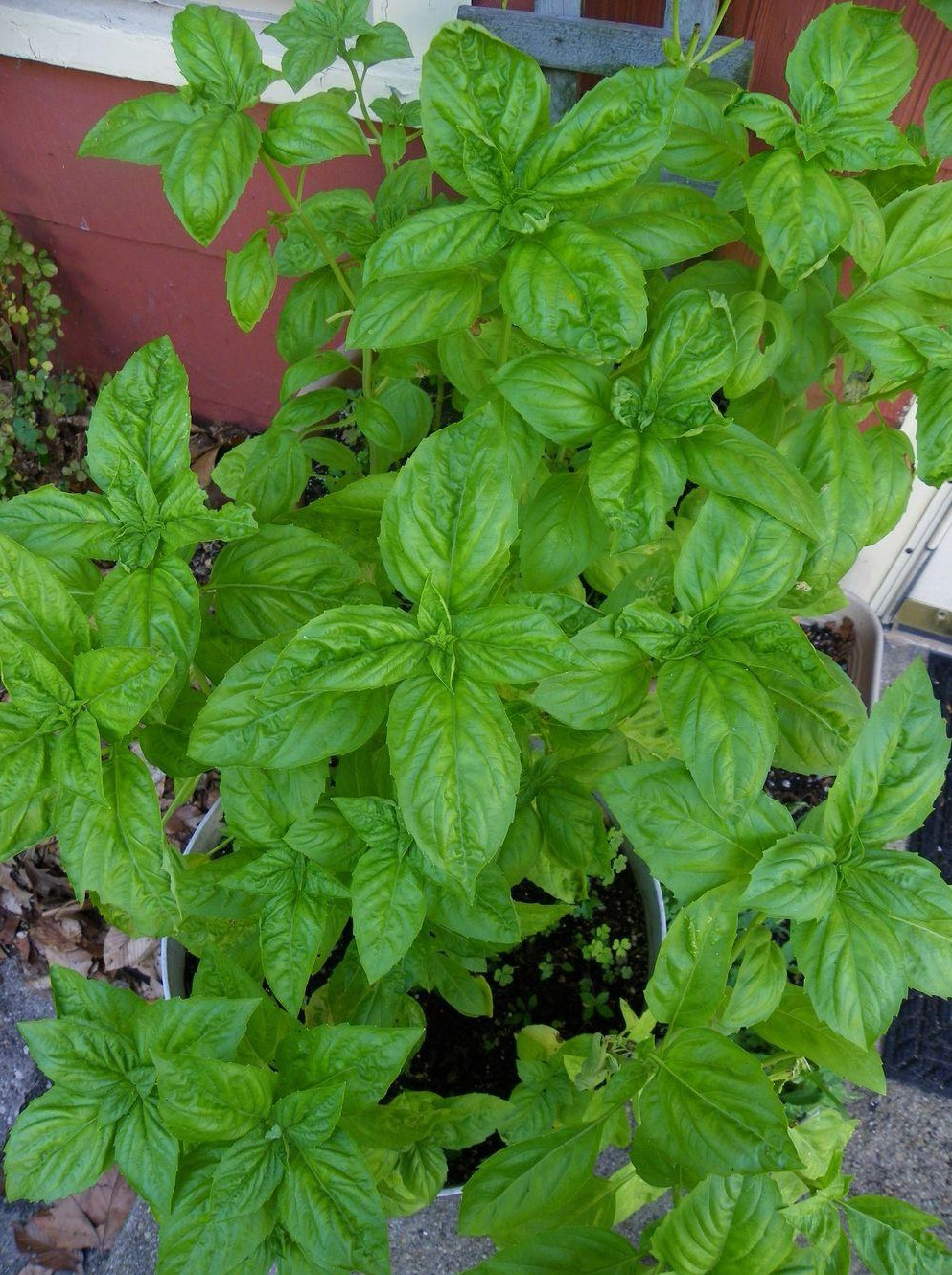
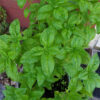
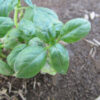
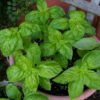














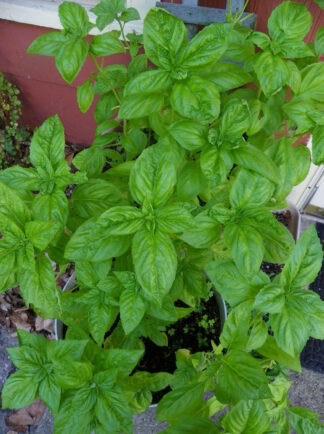

Christine B. (verified owner) –
This basil is amazing!
Patricia Q. (verified owner) –
Awesome seed and seed company
Bob Donlen (verified owner) –
Thanks
Tamara B. (verified owner) –
We love to use this basil fresh and also dehydrate it for winter.
Wayne (verified owner) –
getting ready to assemble new greenhouse and get these started soon
Suzanne (verified owner) –
Beautiful
Anonymous (verified owner) –
Not sure, they started growing and then just dried up. had to replant again, waiting for results.
Michael H. (verified owner) –
Excellent product and well packaged.
Mark M. (verified owner) –
Fast delivery, resealable plastic bags for the seeds, quick germination and almost 100% success rate. I’ll be spreading the word for sure!
Richard (verified owner) –
Very prompt delivery. Excellent seeds.
Cheryl B. (verified owner) –
Planted these seeds last year and they were wonderful! Trying them again.
Marion Franken (verified owner) –
5 star!
Patricia Stone (verified owner) –
5 star!
Barbara McClure (verified owner) –
Not yet sprouted after 1.5 weeks
Diane G. (verified owner) –
5 star!
karen bergerson (verified owner) –
5 star!
Ellen (verified owner) –
5 star!
Mary Harrison (verified owner) –
5 star!
Mary Z. (verified owner) –
Anonymous (verified owner) –
3 star!
Susan Bright (verified owner) –
Growing well
Ellis (verified owner) –
Christina (verified owner) –
It’s a great addition to any herb garden, usually grows well from seed.
Clifford (verified owner) –
Christian B. (verified owner) –
Lisa Johns (verified owner) –